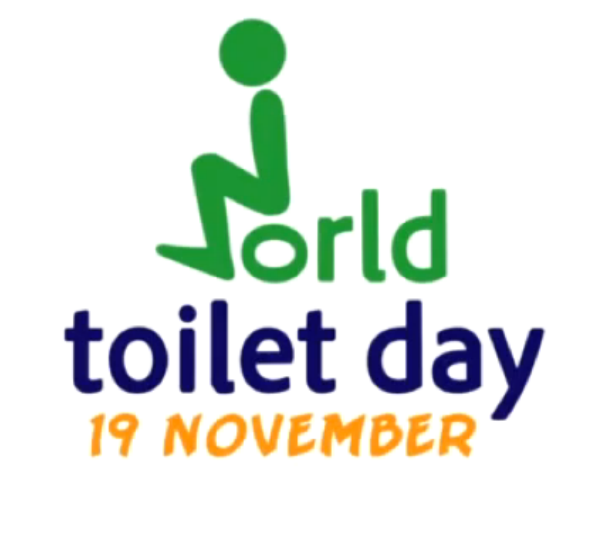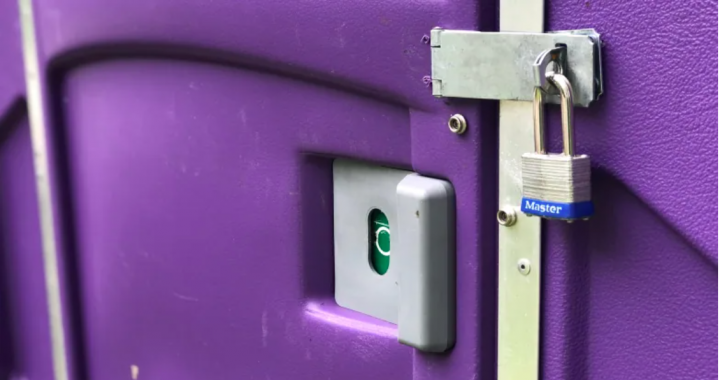OPINION: For some people, access to a toilet is critical, writes Chantal Braganza. Our politicians need to start prioritizing public facilities
Chantal Braganza – Published on May 29, 2018
A couple of years ago, while walking through the University of Toronto’s downtown campus, I stepped into one of its buildings to use the washroom. It was early fall, when the weather is at its hottest before it starts to dip, and I was just entering that last leg of pregnancy — every five minutes seemed to merit a trip to the facilities. The foyer was teeming with people attending some kind of private conference, so, flushed and a more than a little out of breath, I waddled up to the event’s registration counter to ask where the bathrooms were.
The attendant, a slight elderly woman in a crew-neck sweater, looked me up and down — sweaty hairline, rumpled maternity jeans — and asked with a completely disingenuous sweetness whether she could see my registration ticket. When I explained that I didn’t have one and had just walked in off the street, she stood up, walked around the table, and linked her arm in mine, as if she were going to lead me there herself. She pointed at the door instead.
“This is a private event,” she chirped. “There’s a coffee shop just four blocks that way. I’m sure they can help you out.”
This experience was by no means traumatic or uncommon. But it did mark a shift in how I navigated public spaces for the rest of that pregnancy. For months, I made sure to note which TTC stations were fitted with public bathrooms (the subway’s motion often triggered morning sickness). The first couple of years of my son’s life have required a similar awareness: I’ve identified the fast-food spots with the most readily available changing stations, the retail stores with accessible stalls big enough to fit a stroller, the public buildings with designated spots for quiet nursing.
Some people are required to do this kind of mental mapping before they leave home most days of their lives, and for more permanent reasons. People with Crohn’s disease or ulcerative colitis — of whom there are upwards of 250,000 in Canada — who require consistent, reliable bathroom access in case of symptom flare-ups. Seniors. People with prostate issues, neurological conditions, or chronic illnesses that involve incontinence.
The issue of washroom access, though, tends to make headlines only when a citizen’s clash with corporate facilities hints at the scope and depth of the problem. Earlier this month — after staff at a Philadelphia location of the coffee chain called the police on two Black men who asked to use their bathroom — Starbucks announced a new company-wide policy: all people, paying customers or not, will be allowed to use their facilities. A little over a week ago, Tim Hortons found itself at the centre of another viral case of bad PR when a woman in Langley, British Columbia, denied access to a franchise’s bathroom, defecated on the floor of the restaurant and threw feces at the employees.
There is an expectation, deeply woven into the fabric of everyday life, that businesses such as coffee shops, restaurants, and big-box stores should play a role in supplying this amenity. Some are more welcoming, but the fact that bathroom access tends to be up to a business’s discretion allows for targeted exclusion. “Just putting that very ‘No, customers only’ sign on a bathroom empowers people to say you’re not allowed in,” says Halifax-based journalist Lezlie Lowe, who’ll be releasing a book about public-toilet access this fall. “And to make it about being a customer when it can actually be about many other things.”
While there are some jurisdictions that do have legislation for this — signatory states to Ally’s Law in the U.S., for example, require businesses to make employee bathrooms available for people with medical conditions, while some cities in the United Kingdom run “community toilet scheme” partnerships that pay local businesses to open their loos to the public — it’s a stop-gap solution. Ontario has no such legal requirement (a Toronto bylaw, however, requires large stores to provide them), and not everyone thinks introducing one would be the best way to solve the problem.
“Can you imagine a world where we expected Tim Hortons to supply the street signs on the street outside of the shop? No way,” says Lowe “But somehow bathrooms are different.”
The local governments responsible for building them, though, often say that they’re too expensive and difficult to maintain, says Mitchell Kosny, associate director the School of Urban and Regional Planning at Ryerson University. But, he notes, “I think it is part of basic public infrastructure. Parks, roads, sewers, rec centres, public art. It’s part of the public realm.”
As the Montreal Gazette pointed out last year, many large North American cities have lagged glacially on commitments to build such facilities. In 2008, Seattle scrapped a $5 million public-washroom program, selling the pricey self-cleaning stalls on eBay for $2,500 each. New York signed a deal to have 20 public toilets built across the city in 2005; only five have since been built. Toronto made a similar commitment in 2007, ordering 20 such facilities from Astral Media: only three have been delivered, and two of them have since been closed over the winter due to freezing.
Joan Kuyek, chair of GottaGo!, an Ottawa-based public campaign advocating for public-toilet building in the city, says that one relatively easy move would be to update standards such as the Ontario Building Code to address the requirements around publicly available bathrooms. The code contains regulations about washrooms for employees and accessible design, she says, but offers no prescriptions related to public availability.
According to Lowe, one challenge in campaigning for, and speaking frankly about, this issue is that it has to do with common bodily functions. “We’re not as comfortable talking about bathroom access as we are, say, street lamps and trash cans and any other things that we expect our taxes to pay for,” she says.
Urban-planning research abounds outlining the ways in which a lack of safe, freely accessible toilets disproportionately affects many categories of people — and, in many cases, shapes and even limits their ability to navigate and enjoy public spaces. It is a neglected human right that we’d do well to learn to speak up about.
Chantal Braganza produces stories about social justice, health care, culture, and politics for TVO. She is a producer on the On Docs podcast, writes features for TVO.org, edits the TVO.org Daily newsletter, and occasionally produces panel interviews for The Agenda With Steve Paikin.



